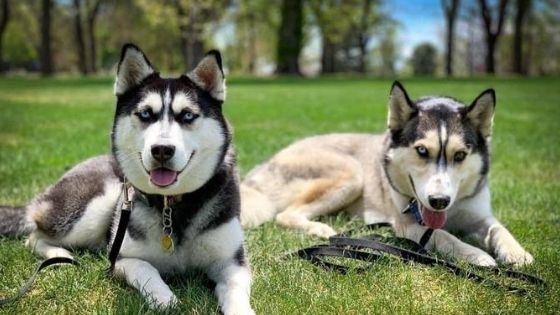Keeping Your Pooch Cool and Safe During the Summer Heat
While we don’t technically speak dog, if we could, we bet our canine friends would be telling us how excited they are for this summer. We love their enthusiasm for the outdoors. Fresh air and sunshine are the perfect setting for creating some of your most cherished memories, especially with your pup. But we also want to make sure that all our furry friends are staying safe – especially as temperatures remain high at the end of the summer.
The good news is it’s easy to keep your dog from overheating. While heatstroke is extremely dangerous, but recognizing the symptoms of an overheated dog is simple and goes a long way in protecting your precious pooch.
Dog Overheating Signs
If you’re walking your dog and asking yourself ‘is my dog overheating?’ we recommend you immediately take a break and inspect your dog for the following symptoms:
- Heavy panting (you know your dog best, so when the panting seems abnormal, even slightly, we suggest you consider this a potential safety risk)
- Disorientation, including glassy eyes, lethargic responses, or confusion
- Brightly colored gums or tongue (red or blue)
- Collapsing
- Vomiting
- Diarrhea
For a casual check of these symptoms, the AKC recommends looking at your dog’s gums; if they are sticky, dry, or discolored, it can be an indication of dehydration.
What to Do if Your Dog is Overheating
If you suspect your dog is overheating, immediately seek shade, rest, and water.
Many dogs, as happy-go-lucky as they are, still try and play even while overheating. Make sure your dog stops exerting energy and encourage them to lie down in a shaded, cool area.
If you are near your home and have A/C, go inside. If you are out on a walk or hike, try and find a body of water where your pup can take a dip to cool down (but make sure they’re not exerting more energy by trying to swim!). If your dog is reticent to get in water, place a cool, damp towel by their ears, armpits, and tail. Bonus: to them it’ll just feel like snuggles!
Offer your dog cool water, but don’t force them to drink! If they seem hesitant to drink water, wet their tongue. Never give an overheating dog ice – the shock could cause irreversible harm.
Ultimately, the best treatment for your furry friend is a visit to your vet as soon as you suspect severe overheating. In urgent situations, call your vet and alert them of your arrival so they can prepare.
Preventing Heat Exhaustion
As with everything in life, prevention is the best medicine.
Age, breed, and activity levels of your dog all play a factor in their risk for overheating. Very young and very old dogs are at a higher risk of overheating than a middle-aged hound. Breeds with shorter snouts or thick coats will overheat faster than those with longer noses and short fur. Active dogs, like shepherds who are designed to herd and play, will overheat faster than those who prefer lounging.
In addition to biological factors, it is important to encourage rest and hydration periodically (at least every hour) when active. Take breaks, pace yourself, and drink lots of water! If you’re thirsty, your dog definitely is.
Luckily, even though heat exhaustion is serious, it’s easy to prevent. Just relax, and enjoy your walks, hikes, or outdoor adventures together. Savor the moments with your sidekick, and you both will be happier for it.
Obedience and Overheating?
Ultimately, an obedient dog that responds to commands will be easier to keep safe than a dog with rogue energy. By maintaining a healthy mastery over your dog’s actions and reactions, you’ll be able to keep them safe when the day gets hot and playtime gets overwhelming.


